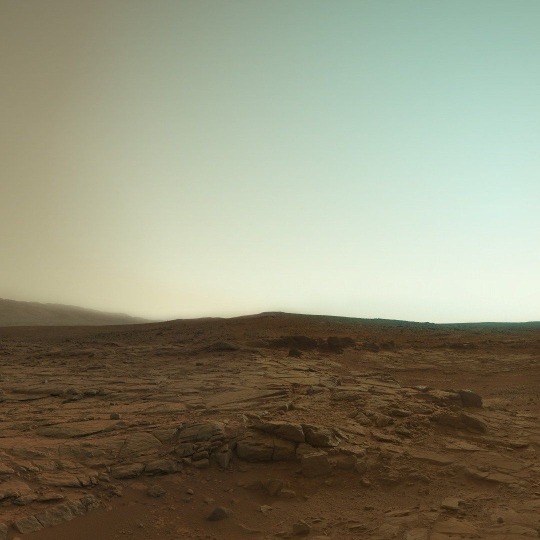#caltech
Explore tagged Tumblr posts
Text

🟣 JUPITER | PJ70 Jet N5 2025-03-02 15:28 UT
Mission Phase 70 source: www.missionjuno.swri.edu/junocam/proc..
Credit : NASA / SwRI / MSSS / Jackie Branc © CC BY
#Jupiter#Juno#Juno mission#jackie branc photographer#Juno Cam#gas giant#citizen science#elloon#NASA#Caltech#SwRI#MSSS#Solar System
37 notes
·
View notes
Photo





Inner Space & Outer Thoughts (5 of 13) - Christian Benavides
#Inner Space & Outer Thoughts#Christian Benavides#sci fi#astronaut#space#portals#magitech#travelers#cover art#CalTech#fantasy art#digital art
59 notes
·
View notes
Text
Using an approach called DNA origami, scientists at Caltech have developed a technique that could lead to cheaper, reusable biomarker sensors for quickly detecting proteins in bodily fluids, eliminating the need to send samples out to lab centers for testing. "Our work provides a proof-of-concept showing a path to a single-step method that could be used to identify and measure nucleic acids and proteins," says Paul Rothemund (BS '94), a visiting associate at Caltech in computing and mathematical sciences, and computation and neural systems. A paper describing the work recently appeared in the journal Proceedings of the National Academy of Sciences. The lead authors of the paper are former Caltech postdoctoral scholar Byoung-jin Jeon and current graduate student Matteo M. Guareschi, who completed the work in Rothemund's lab.
Read more.
13 notes
·
View notes
Text



If ya know, ya know
#big bang theory#sheldon cooper#raj koothrappali#howard wolowitz#leonard hofstadter#penny#amy farrah fowler#bernadette rostenkowski#science#comedy#i love nerds#physics#bazinga#caltech
32 notes
·
View notes
Text

Illustration detail of Mount Palomar Observatory’s 200-inch Hale telescope.
#vintage illustration#astronomy#space telescopes#telescopes#hale telescope#palomar observatory#mt palomar#mount palomar#mount palomar observatory#caltech#jet propulsion laboratory#pyrex#science#science & technology#observational astronomy#natural science#observatory#observatories
23 notes
·
View notes
Text

i was just looking around the rate my professor for caltech… just for fun…
bro why does this fictional character have more ratings than any real faculty 😭 like most of them just have 1 or 2
should i give in to the hype and watch big bang theory???? 🤨
#physics student#physics studyblr#big bang theory#sheldon cooper#caltech#rate my professor#studyblr#eclipsellium
13 notes
·
View notes
Photo

SOL - 4328
Visualization: Vladimir Jankijevic
Credit: Courtesy NASA/JPL-Caltech - https://mars.jpl.nasa.gov
#Mars#Red planet#Space#Planet#Science#Astronomy#Geology#Caltech#JPL#NASA#msl#MAHLI#Curiosity#Rover#3D#Animation#Vladimir Jankijevic
6 notes
·
View notes
Text

Es más lento que el WiFi básico:
5 notes
·
View notes
Text
"do you have any finals this term?"
lol
15 page final report on the history of science communication at the Royal Institution Thursday 13th The Invisible Wall is back 🧍 DONE!!
final paper on causality in astrophysics research Thursday 20th DONE!
9 weeks worth of journal entries for my yoga class DONE!
outline of my senior thesis Thursday 20th Eventually™
oral exam on physics of the interstellar medium Monday 17th 10:00am (and a problem set due Friday 14th 11:59pm) DONE!
#academia#science#astrophysics#astronomy#astrology#caltech#finals#spring break 2025#the burnout is real#invisible wall
3 notes
·
View notes
Photo

I... a universe of atoms, an atom in the universe.
- Richard Feyneman
Richard Feynman (1918-1988) was an American theoretical physicist who received the Nobel Prize in 1965. Robert Wilson recruited the brilliant young Feynman, only 24 at the time, for the Manhattan Project as a junior physicist soon after completing his Ph.D. At Los Alamos, Feynman was assigned to the theoretical division of Hans Bethe, and soon became a group leader. Feynman was briefly transferred to the Oak Ridge facility, where he aided engineers in calculating safety procedures for material storage so that inadvertent criticality accidents could be avoided. He was well known for playfully challenging the security at Los Alamos, and was present for the Trinity test in 1945, viewing the explosion through his truck windshield.
After the Manhattan Project, Feynman regretted not reconsidering his work after Germany was defeated in World War II, although he continued to feel that the threat of a nuclear-armed Nazi Germany was enough to justify his initial participation. He turned down an offer from the Institute for Advanced Study and joined Hans Bethe at Cornell from 1945 to 1950, where he taught theoretical physics. Feynman left to join the faculty at Caltech in 1950. There he conducted his groundbreaking research in areas of quantum electrodynamics and superfluidity.
Feynman won his 1965 Nobel Prize in Physics for his work in quantum electrodynamics, a formula well known for its accurate predictions, which combines his path integral formulation and his Feynman diagrams. Additionally, he worked in the fields of the physics of superfluidity and quantum gravity, and developed a model of weak decay. However he caused great controversy when shortly after winning the prize in 1965, he seemingly rejected it. Feynman increasingly felt unease at the award turning the scientists into an institution.
It was no strange thing for Feynman to offer an opinion contrary to authority. Often called a buffoon and a magician, Feynman was scolded by the scientific world for his pursuit of things outside science, like art and music. A series of televised lecturers for the public secured his place in the households of millions in the US and the rest of the world. It was here that his excitement and passion for science trickled into the popular psyche and admitted countless young people into the world of science. He loved science and its limitless possibilities of discovery; it is no surprise, then, that he viewed his Nobel Prize with indifference.
#feyneman#richard feyneman#quote#physicist#scientist#nobel prize in physics#nobel laureate#american#caltech#los alamos#nuclear#atom bomb#manhattan project#science#university
88 notes
·
View notes
Text

🔴 Mars Perseverance Sol 1421: Left Navigation Camera (Navcam) / enhanced
Feb. 17, 2025 (Sol 1421) / 10:17:04 local solar time Image Credit: NASA/JPL-Caltech/Jackie Branc
#elloon#Mars#Perseverance#mars perseverance#planetary science#rocks#geology#Solar System#NASA#Caltech#NASA JPL#citizen science#jackie branc photographer
17 notes
·
View notes
Video
tumblr
stereomovie.mpg Apr 1994 Archived Media File 📀
21 notes
·
View notes
Text

Chemists succeed in upscaling a common reagent for industrial level applications
The metallic element samarium, when bound with other elements, is an incredibly useful chemical reagent for synthesizing molecules that can lead to new pharmaceuticals. Discovered in a Russian mine in 1879, the element was named after the mineral it was found in, called samarskite, which itself was named after Russian mining engineer Vassili Samarsky-Bykhovets. The most common samarium reagent is samarium diiodide, which consists of one atom of samarium and two atoms of the element iodine. But scaling up this versatile reagent to quantities large enough to be used in industrial settings has proved challenging. "The reagent is air sensitive, so you often have to prepare the solution fresh, right before the reaction," says Caltech graduate student Chungkeun Shin, who works in the lab of Sarah Reisman, Bren Professor of Chemistry and the Norman Davidson Leadership Chair of Caltech's Division of Chemistry and Chemical Engineering.
Read more.
20 notes
·
View notes
Text
LAST DAY TO FILE - 12/17/2024 (today)
DID YOU GO TO A "TOP TIER" UNIVERSITY? DID YOU RECEIVE SOME FINANCIAL AID? FILE TODAY TO RECEIVE COMPENSATION!!!
Closes at 11:59:59 Pacific Time
Got mine in at the last minute as per usual. Sending out anyway in case anyone else wants to scramble to get things together today.
#get that money if you deserve it!#class action lawsuit#schools listed below#brown university#university of chicago#columbia university#dartmouth college#dartmouth#duke university#emory university#emory#northwestern university#william marsh rice university#vanderbilt#yale#yale university#caltech#california institute of technology#georgetown university#johns hopkins university#johns hopkins#mit#massachusetts institute of technology#university of notre dame#university of pennsylvania#financial aid
4 notes
·
View notes

